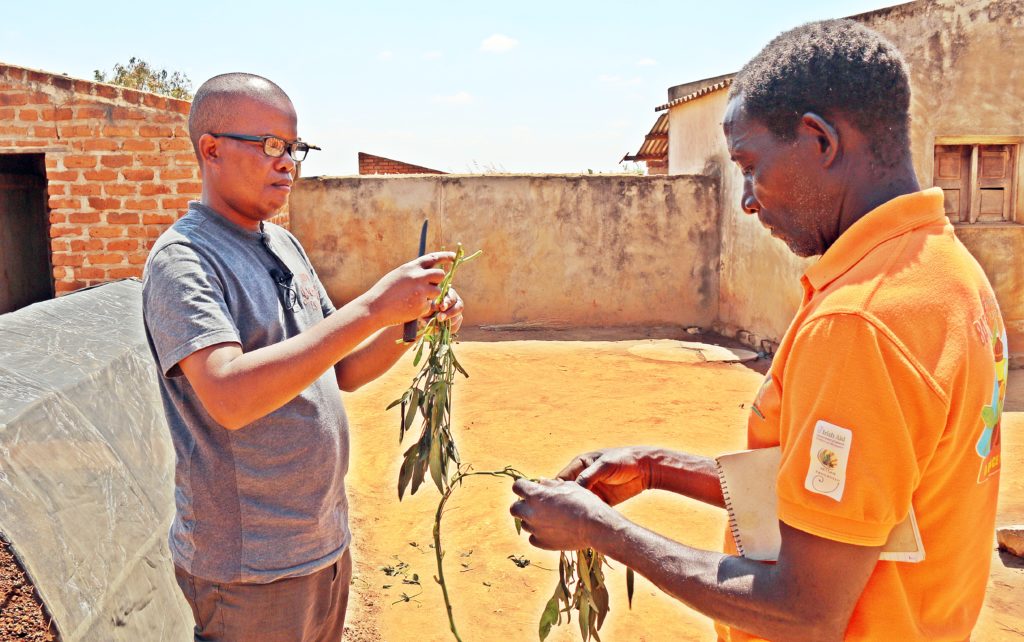Fernando Alibi (in orange t-shirt), a farmer in Chimbunila District of Mozambique joins CIP’s Mario Jaisse to produce a video on the management of net tunnels
September 2016:
In Choulue locality, Chimbunila district—Mozambique— Fernando Alibi, has finished constructing his net tunnel and is anxiously waiting for vines. He has been growing the orange-fleshed sweetpotato (OFSP) varieties from 2014, and has been selected as one of the few Decentralized Vine Multipliers (DVMs)—model sweetpotato farmers who conserve and multiply vines during the dry season, and then distribute to other farmers close to the rainy season. Soon, Mario Jaisse, an agronomist for the International Potato Center (CIP) in Niassa, arrives with vines of the orange-fleshed Delvia variety. Together, Jaisse and Alabe plant the vines in the net tunnel, and carefully close it.
For the next two and a half months, i (Alibi) will only open the net tunnel twice: first to pull out weeds, and when they are ready, to cut the vines and transfer them into an open field for the next stage of multiplication. Until then, i will water the plants carefully from the outside, and regularly check to ensure that the netting has no holes. The purpose of the net tunnel is to protect sweetpotato planting material from getting into contact with pests, which could transmit diseases.
With the net tunnel, we’re able to improve the quality of vines, which then helps us to increase our yield. In December, I will plant the vines in a small field that has good conditions, and does not have pests and diseases. Between January and February, I will cut the vines and plant them in a larger field to produce roots.
Alibi does not produce vines for his farm only. He is part of a wider network that supplies farmers in Niassa Province of Mozambique with clean, disease-free planting material.
Read more about the network: An intricate network moves sweetpotato planting material from the research station to the farm

